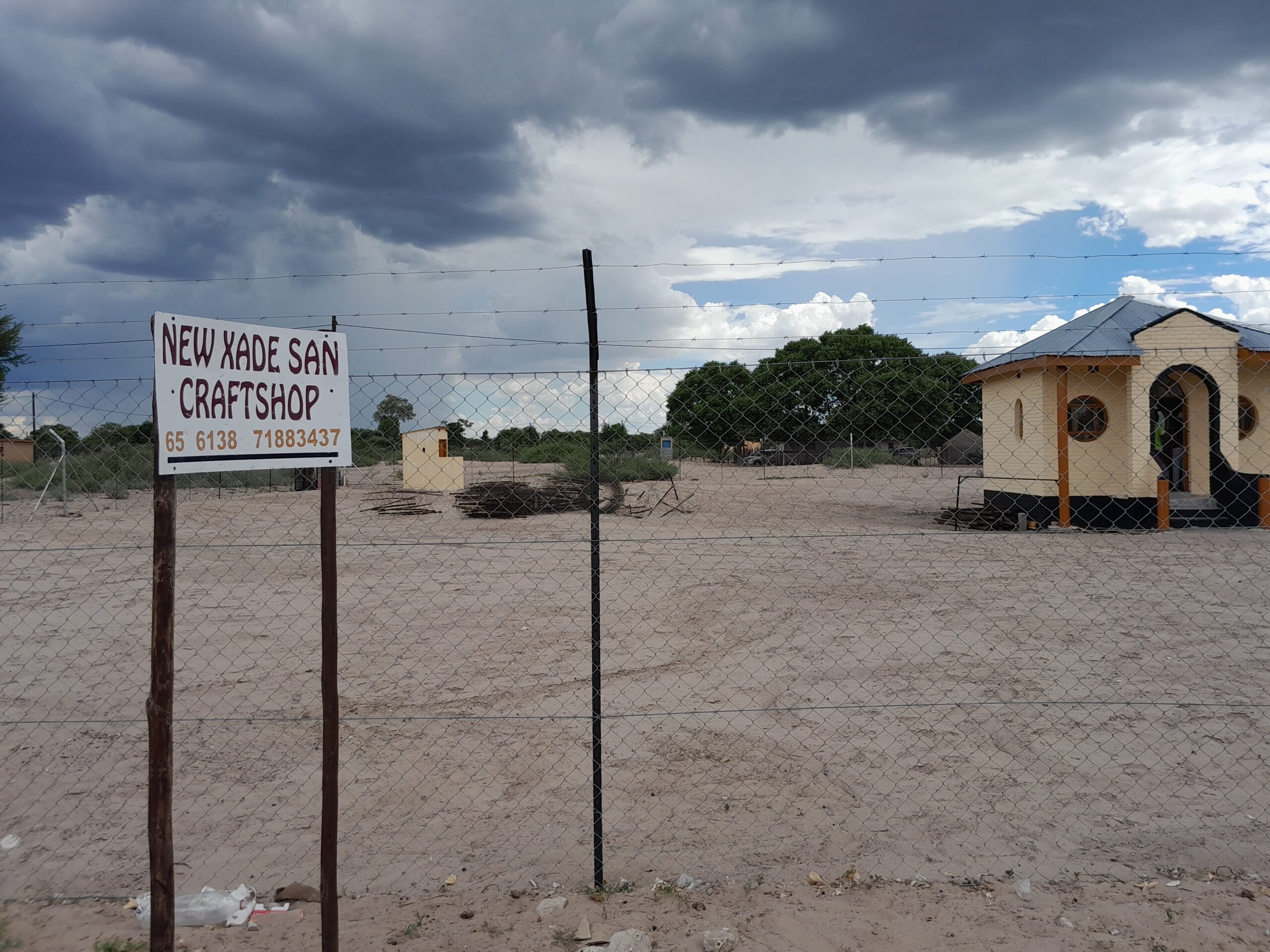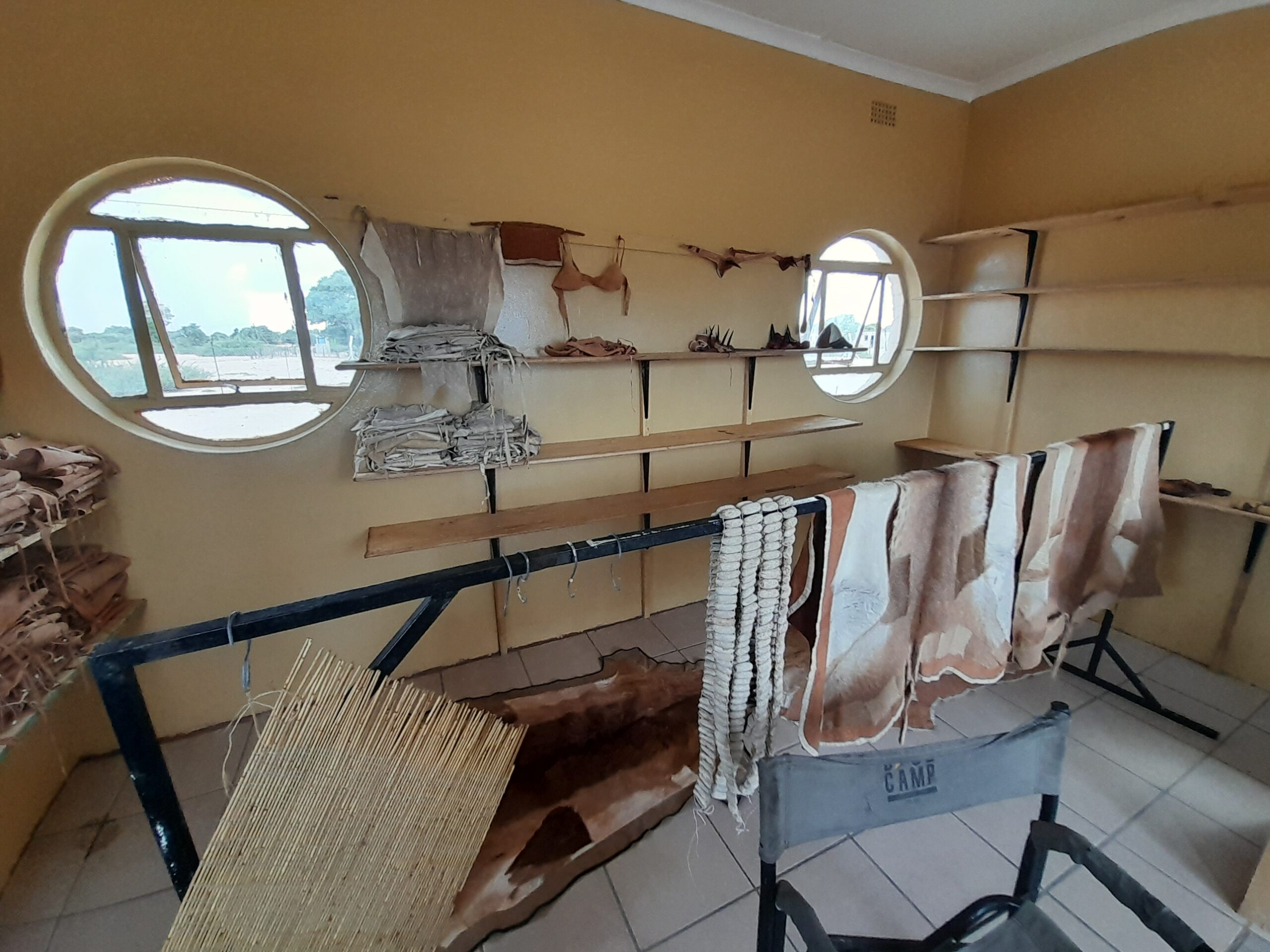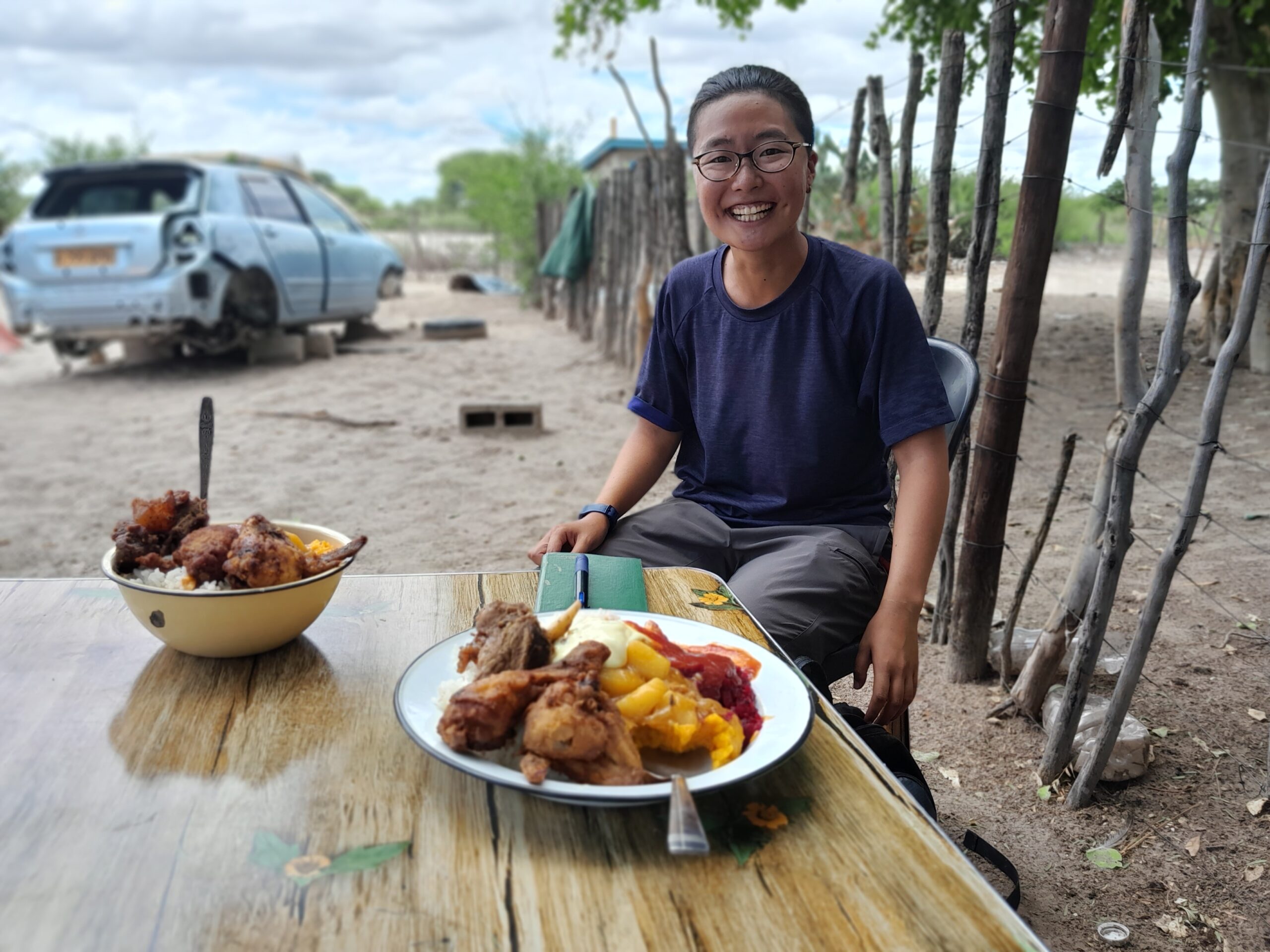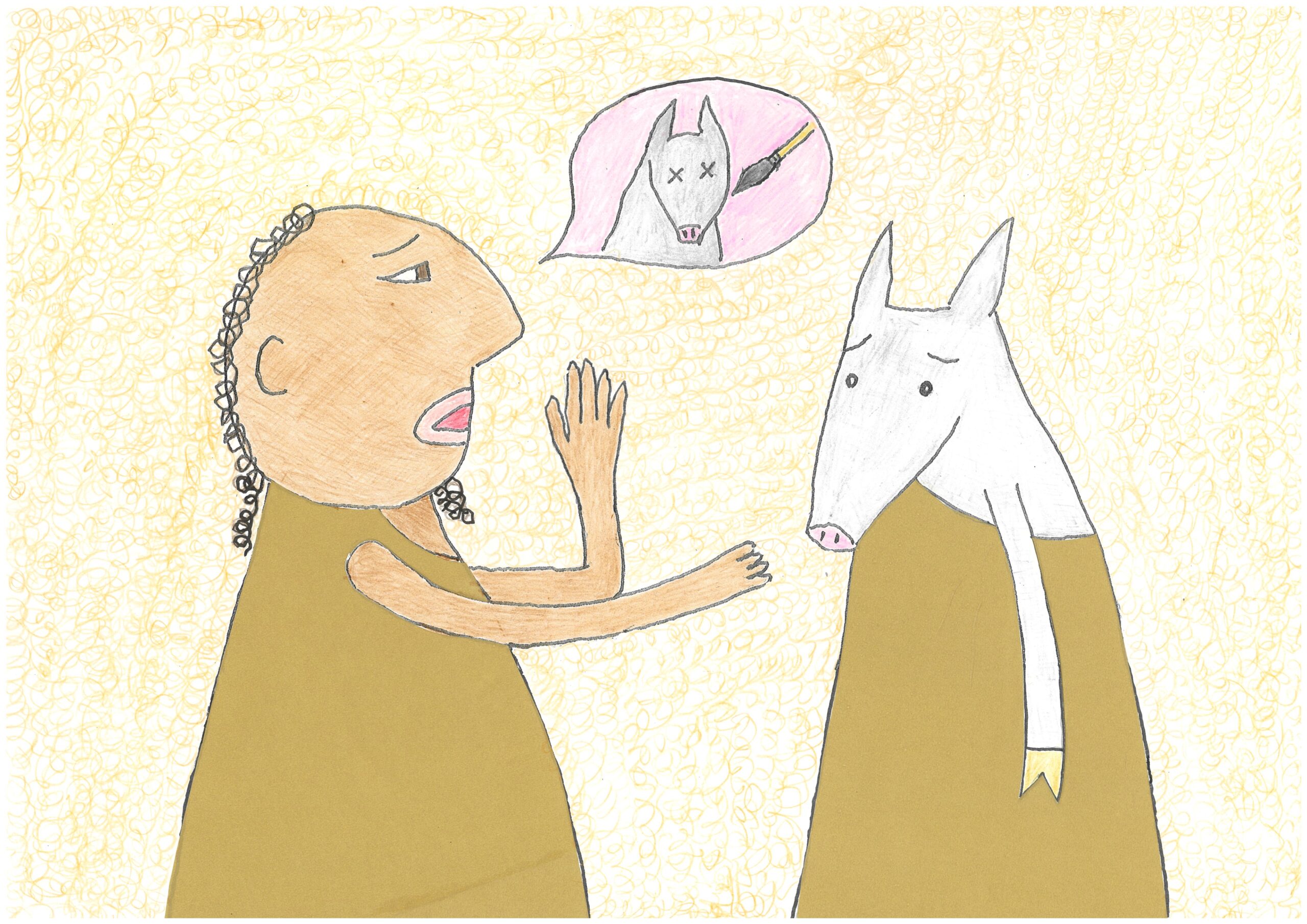Report on the Dispatch to Botswana: Action research through revitalization of folk tales through picture-story shows, etc.
Kyoto University
Graduate School of Asian and African Area Studies
Professor, Akira Takada
From December 14, 2005 to January 3, 2024, I visited mainly the villages of Ghanzi and New Xade in Botswana to conduct fieldwork on the ecological future of child rearing in the contact zone between hunter-gatherers and agro-pastoralists in Africa.
In the town of Ghanzi, the capital of the Ghanzi District, I visited the home of Hessel and Coby Visser with Prof. Hirosi Nakagawa, one of the project core members. Hessel and Coby Visser have been engaged in the development of San, including linguistics and Bible translation, at KURU in D’kar, Ghanzi District for many years as part of the activities of the Summer Institute of Linguistics (SIL) and the Dutch Reformed Church. They are old acquaintance of Prof. Nakagawa and myself. We discussed the progress of the G|ui dictionary and orthography system that Professor Nakagawa has been promoting, and exchanged opinions about it. Professor Nakagawa’s G|ui dictionary and orthography system is an important part of the project’s action research through literacy education, mother tongue education, and revitalization of folk knowledge. Hessel is also a specialist in Naro, a language closely related to G|ui in terms of typological and phylogenetic classifications, and has contributed greatly to the compilation of its dictionary and the establishment of its orthography. In this session, we heard various episodes from Hessel and Coby about their difficulties and innovations in doing so. We also discussed the possibility of linking the results of this project with the development project in Naro that Hessel and Coby Visser have been working on in the future. It was a very meaningful and enjoyable time.
In Ghanzi, I met a number of residents of the village of New Xade, the next destination. Some of them were friends of mine, and we were happy to see with each other again. At this time of the year, just after the distribution of government pensions and public works subsidies, many New Xade residents were coming to the nearest town, Ghanzi, for shopping and other activities. Christmas, the biggest event of the year in Botswana, was also approaching. The small town of Ghanzi, located on the periphery of the Kalahari Desert, also had a festive and exuberant atmosphere.
Then my friends and I rode in my vehicle and visited New Xade. New Xade is one of the main sites of this project and I have visited there for a quarter of a century since I was a graduate student. Since its establishment in 1997 as part of the Botswana government’s policy for resettlement of the remote area dwellers, New Xade has been inhabited mainly by the above-mentioned G|ui and their close group, the Gǁana, and currently has a population of over 1,500 people. The G|ui and Gǁana are known as the indigenous people and hunter-gatherers of the area. When I arrived in New Xade, the New Xade San Craftshop near the entrance of the village caught my attention (Photos 1 and 2). The last time I visited New Xade last year, this building existed but the Craftshop was not yet open. Now, traditional San daily things and ornaments for tourists are sold here. I will continue to monitor the development of this activity, as it resonates with our interest in the revitalization of traditional culture and the (re)construction of collective identity in this project.

of the New Xade San Craftshop

of the New Xade San Craftshop

with Christmas feast
In New Xade, Ms. Tomoe Noguchi, a doctoral student of ASAFAS who I’m supervising, was conducting long-term fieldwork on primary education and health in G|ui and Gǁana (Photo 3). In this study, I first arranged a storytelling performance aimed at revitalizing G|ui/Gǁana folktales, which is being promoted in this project, together with Ms. Noguchi and her colleagues. This was a picture-story show based on the “Aardvark Woman,” one of the well-known folktales of G|ui/Gǁana in the area. The text of the picture-story show (G|ui and Gǁana versions) is based on “Aardvark Woman” in the recently published “Bushman Folktales” (Kyoto University Press, 2020), which was compiled by Professor Emeritus Jiro Tanaka of Kyoto University based on interviews with the G|ui/Gǁana people, as well as a more detailed version of the same folktale by Professor Nakagawa. The story is about a man who has an Aardvark woman for a wife, and his relatives want to kill and eat her, and while he hesitates, she follows the advice of other women and escapes. Ms. Emi Nakayama, a technical assistant for this project, created very attractive drawings (Photo 4). The text was read out loud by Ms. M (a Gǁana-speaking woman in her 20s) and Mr. K (a Gǁana and G|ui-speaking man in his 20s) according to Professor Nakagawa’s orthography in front of an audience of mainly children, and the reading was captured on video. A detailed analysis will be made and published as a result of this project.

(made by Ms. Megumi Nakayama)
Although it is beyond the scope of this report, I also conducted interviews regarding the conflict over the burial site of the deceased Gǁana man (which in recent years has developed across New Xade and the remaining settlements in the Central Kalahari Game Reserve (CKGR), which expands eastward from New Xade, and has become well known throughout Botswana through the media coverage. Dr. Yuriko Sugiyama, a research associate of this project, recently compiled a detailed report and analysis in her doctoral dissertation, “Life and Death Tangled in the Bush: The Construction of the Past, Present, and Future among the San” (Kyoto University, 2023). I also assisted Prof. Nakagawa’s literacy workshop. Although the period of my stay in Botswana was short this time, I actively engaged in fieldwork and action research, and it was very fruitful. I would like to express my gratitude to the people and organizations that made this possible.
